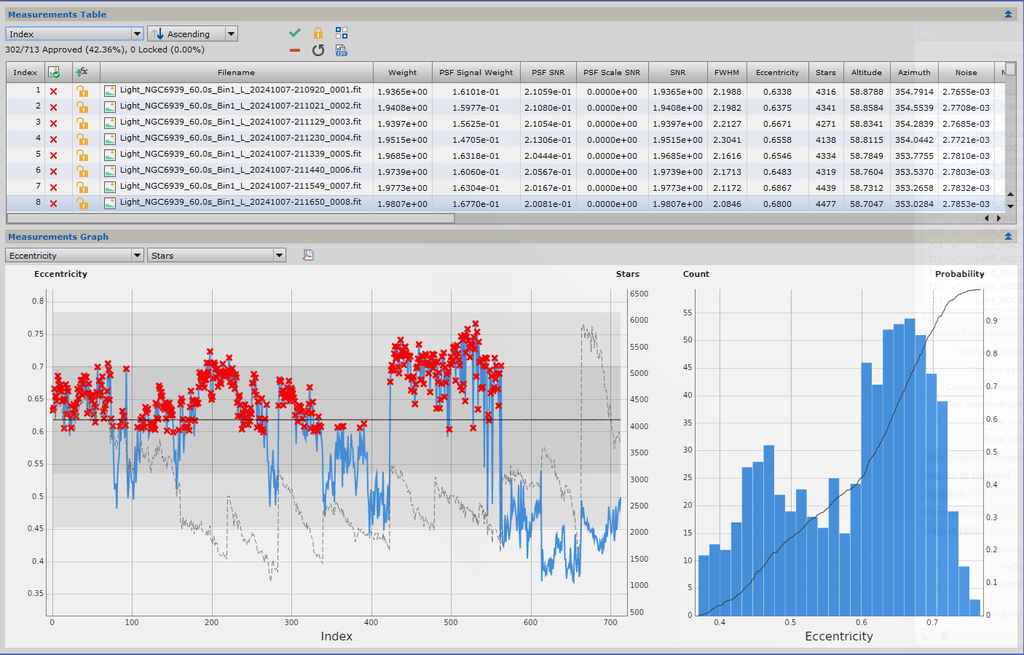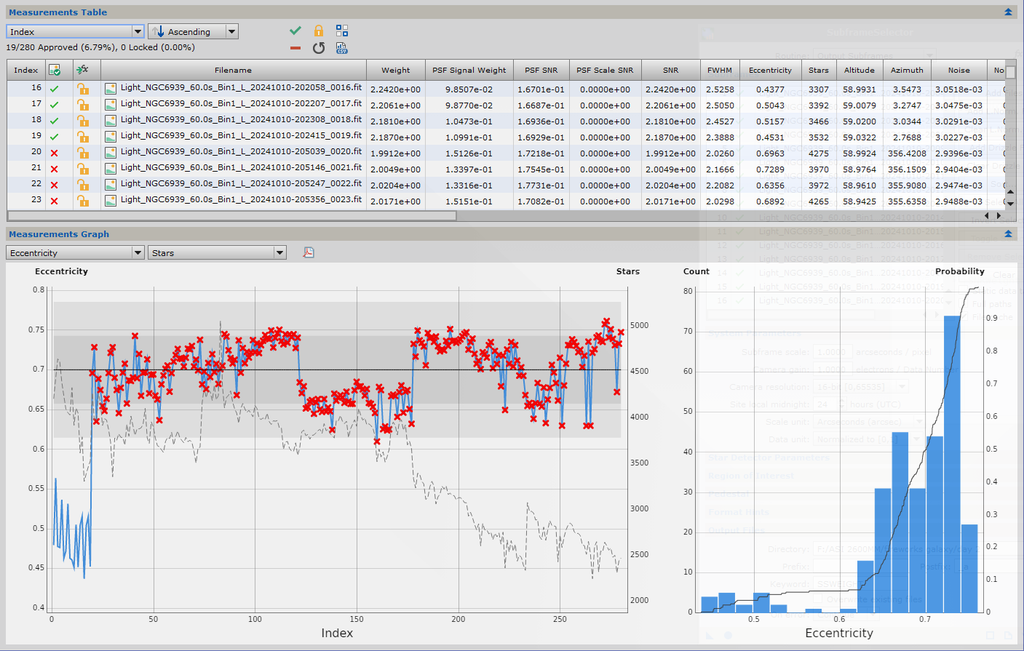Approval: FWHM < 6 && Eccentricity <= 0.6 && Stars > 500
Weighting: SNRWeight
I've generally gotten 90+% of acceptance with this when I have a clear night...except with my Lum data. It's very frustrating. I understand Lum data needs to have a much lower exposure so I do RGB at 120 second and Lum at 60 seconds...but they are still coming out terrible in eccentricity. Anyone else know what's going on? My tracking has been between .2-.3, autofocus ever hour, so I don't think it's the mounts fault. In fact I even take Hydrogen data before Lum the last two nights and every hydrodgen sub has been accepted. Whats going on with my lum?
You can see the Lum data vs the RGB (right side) acceptance in the screenshot below. Should I increase the acceptance to .65 eccentricity (it'll add another 3 hours of acceptable lum data) and just live with it?




